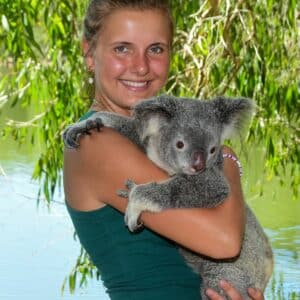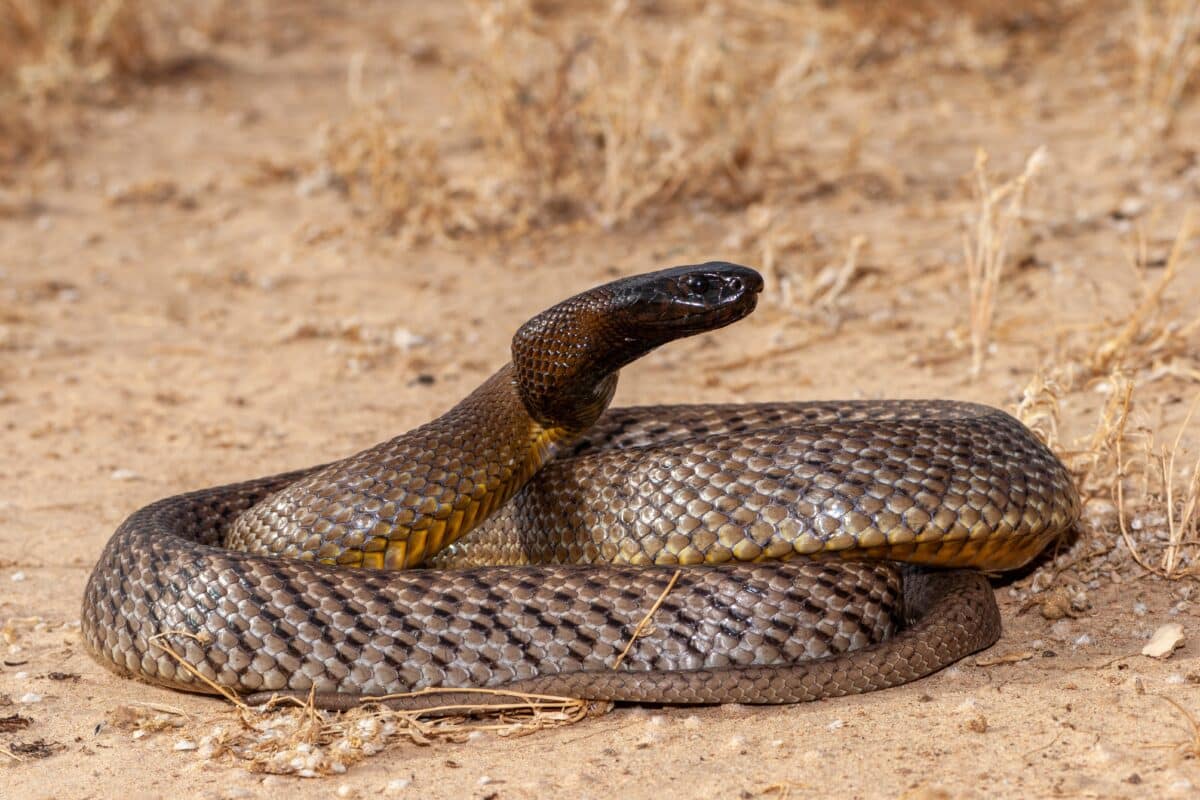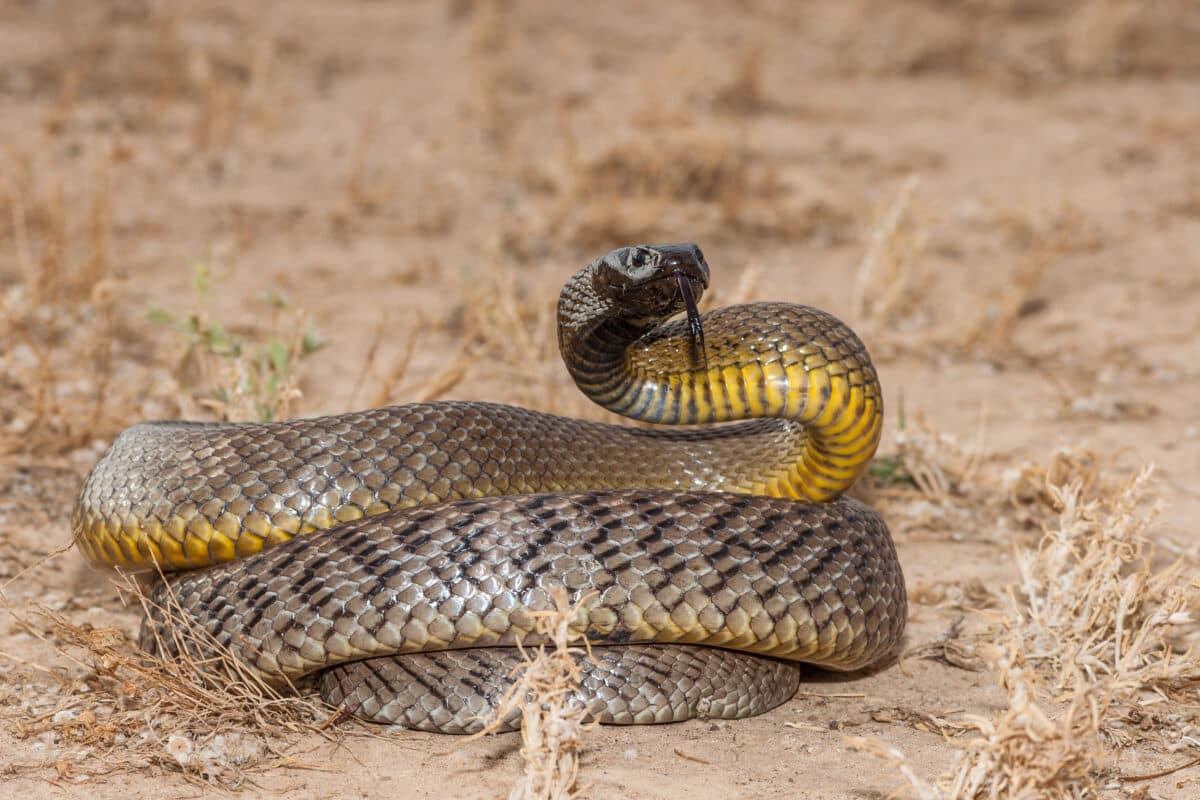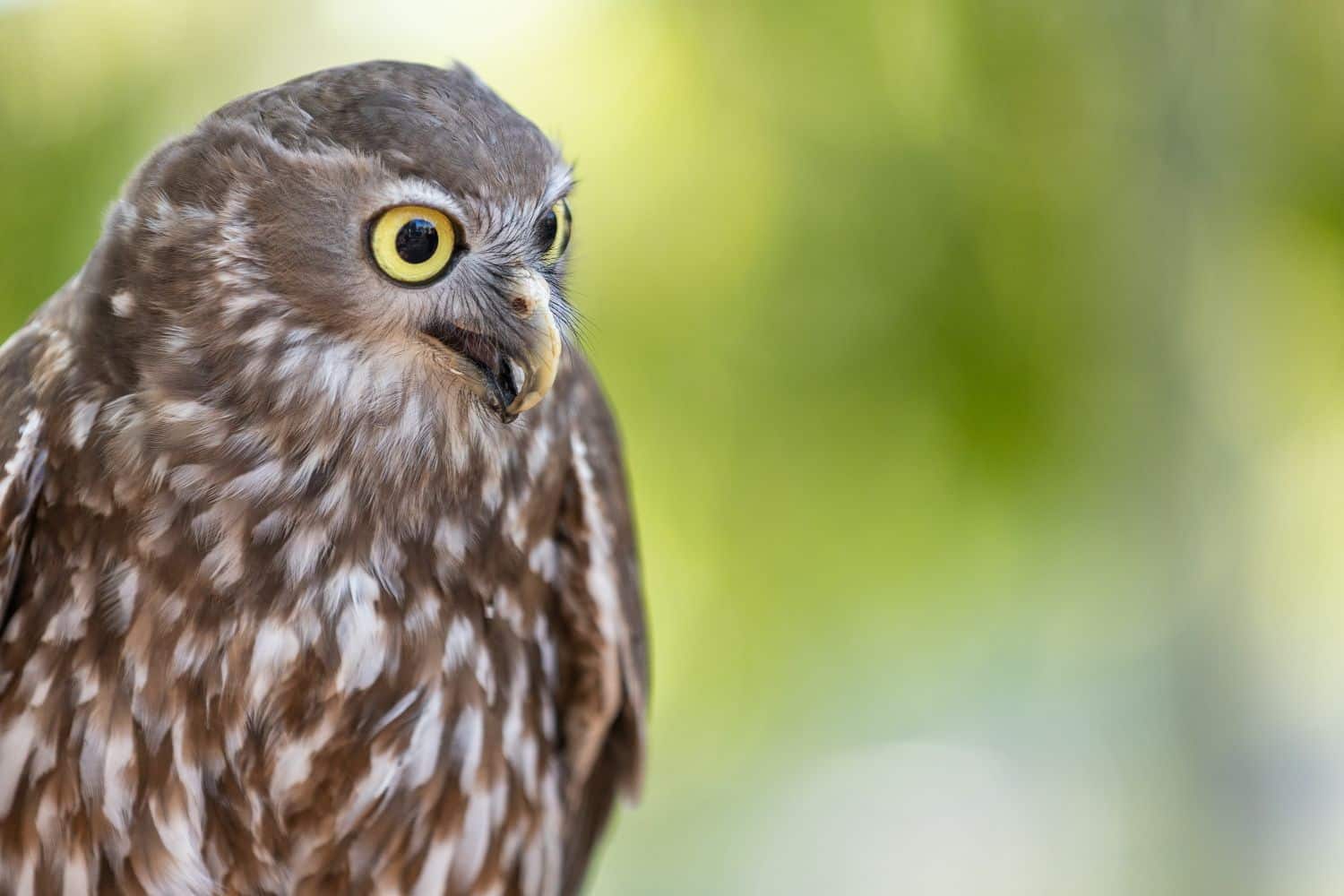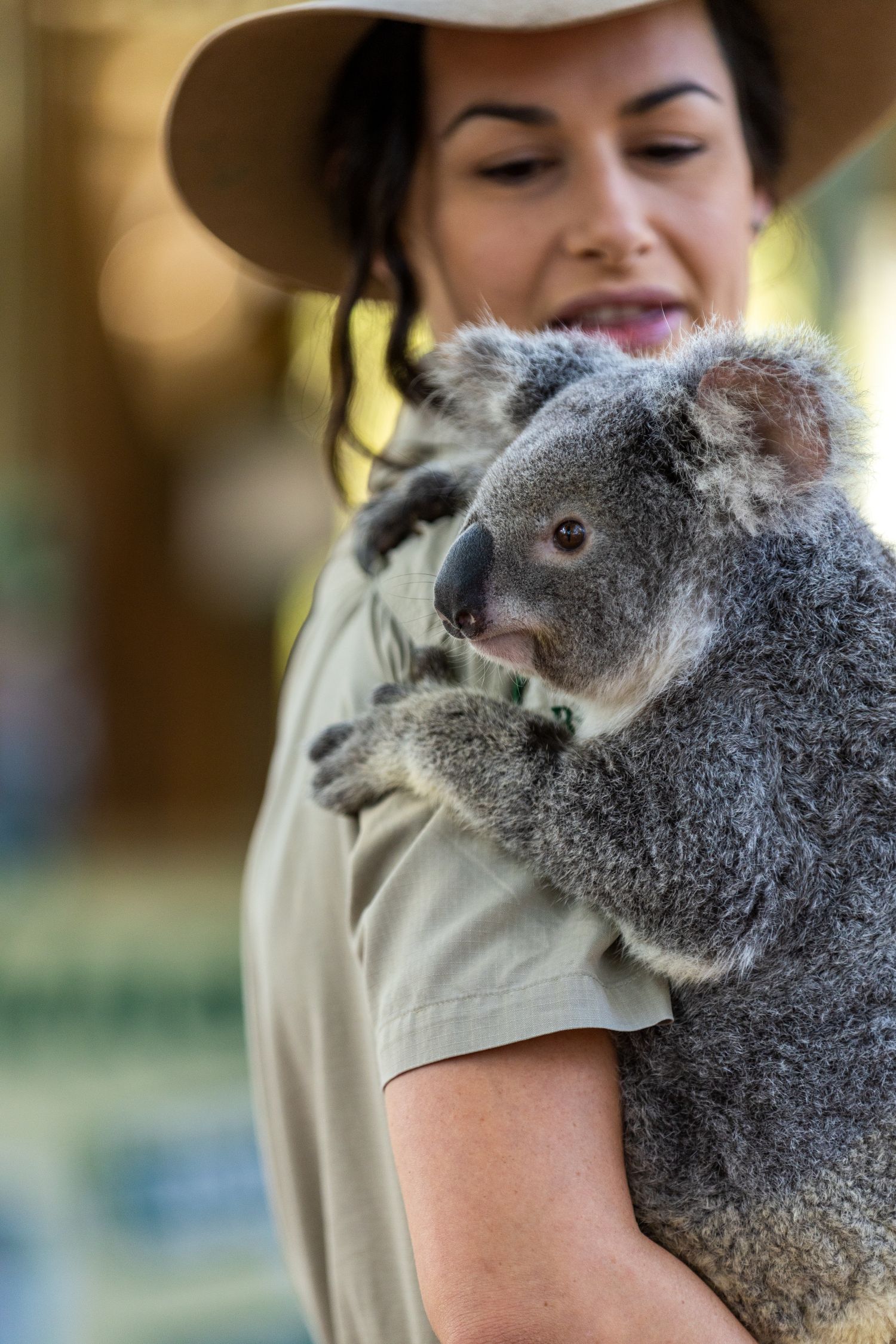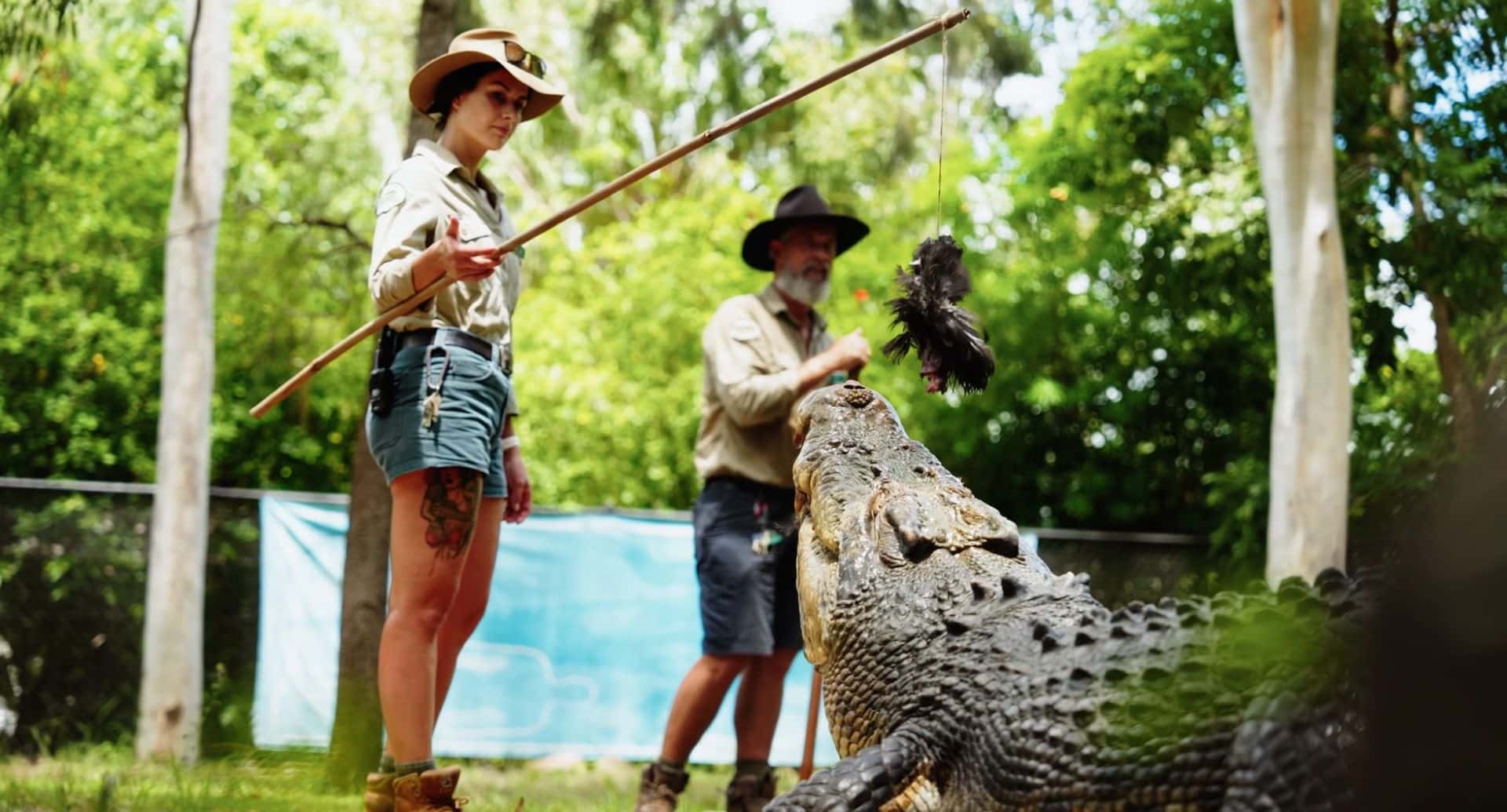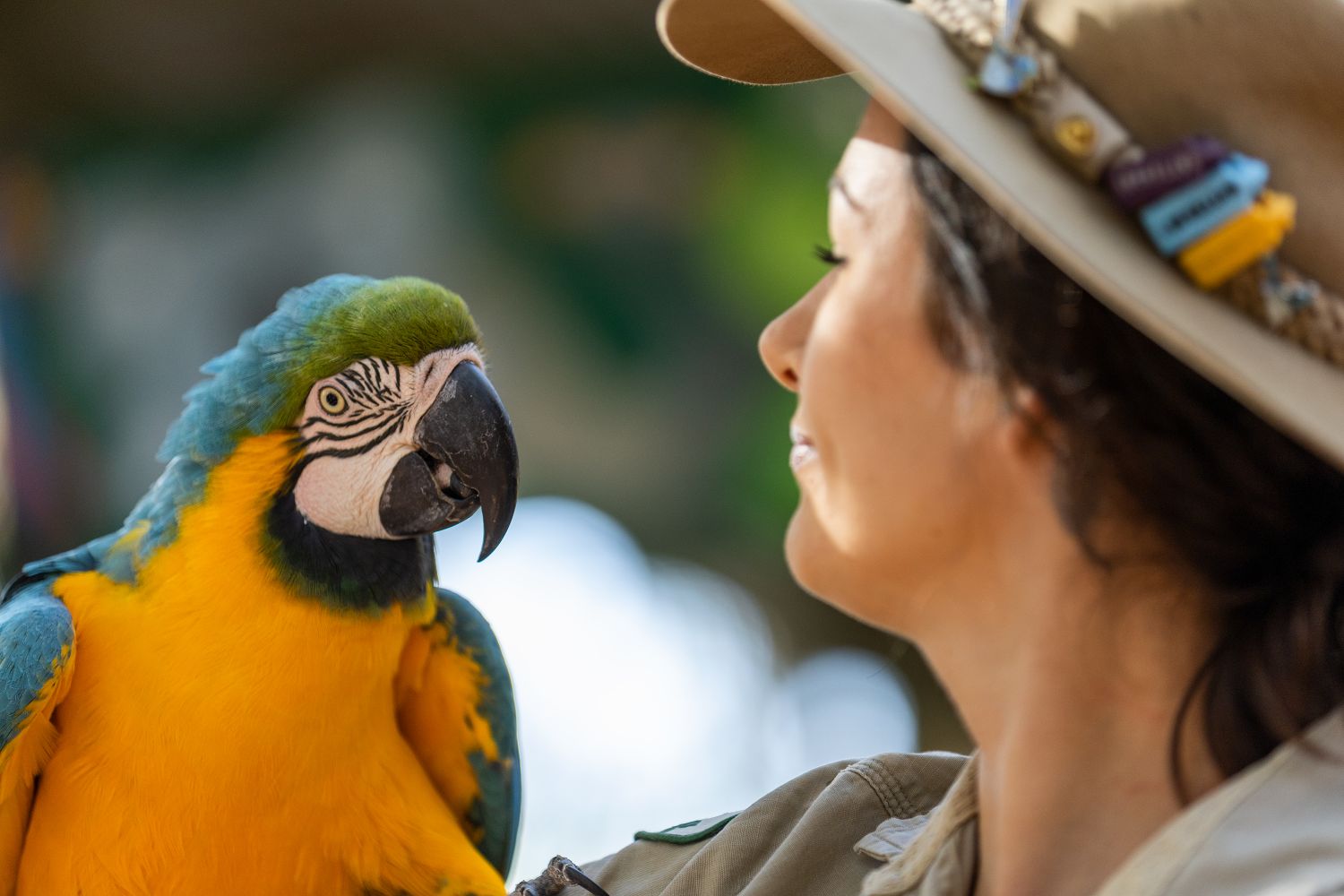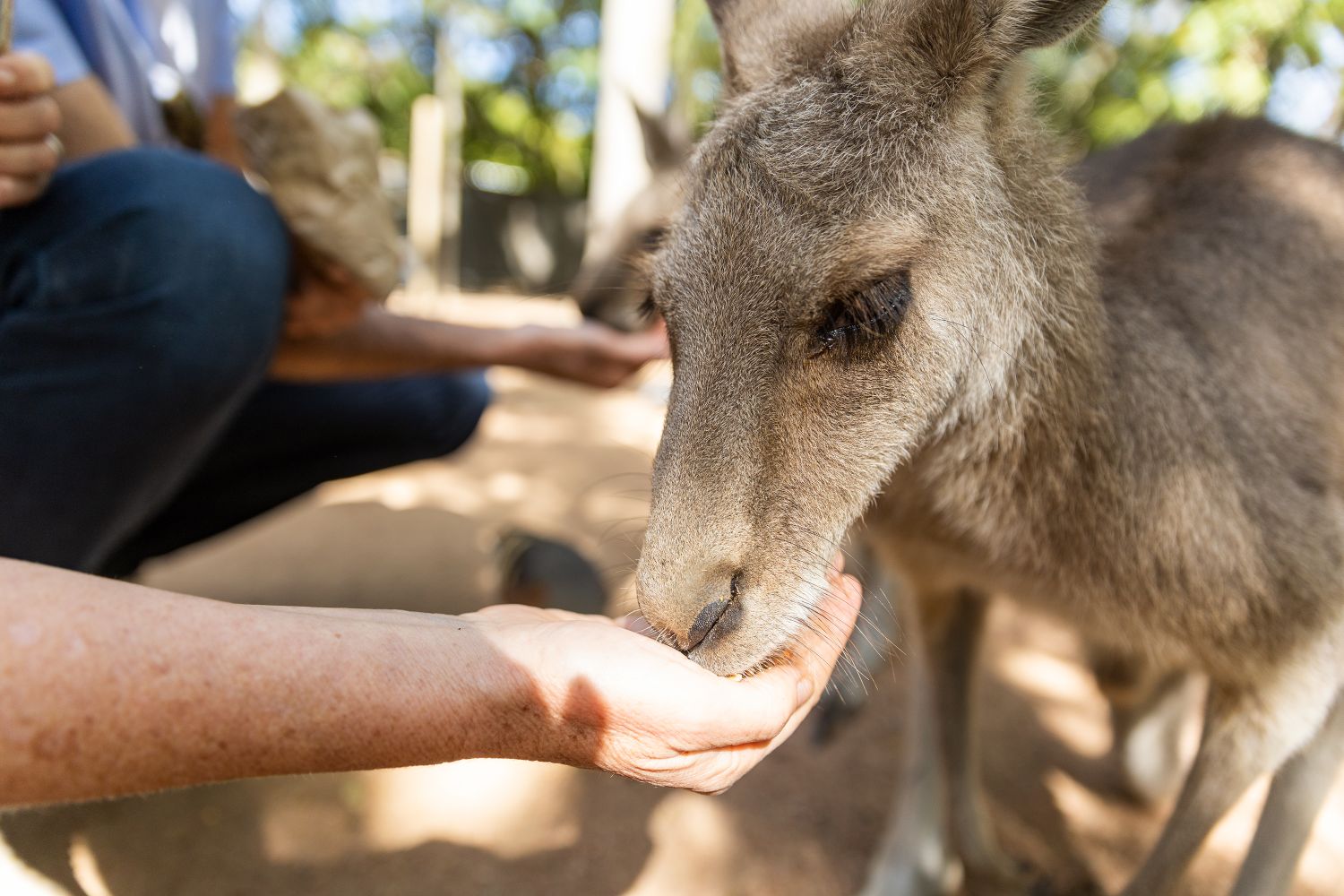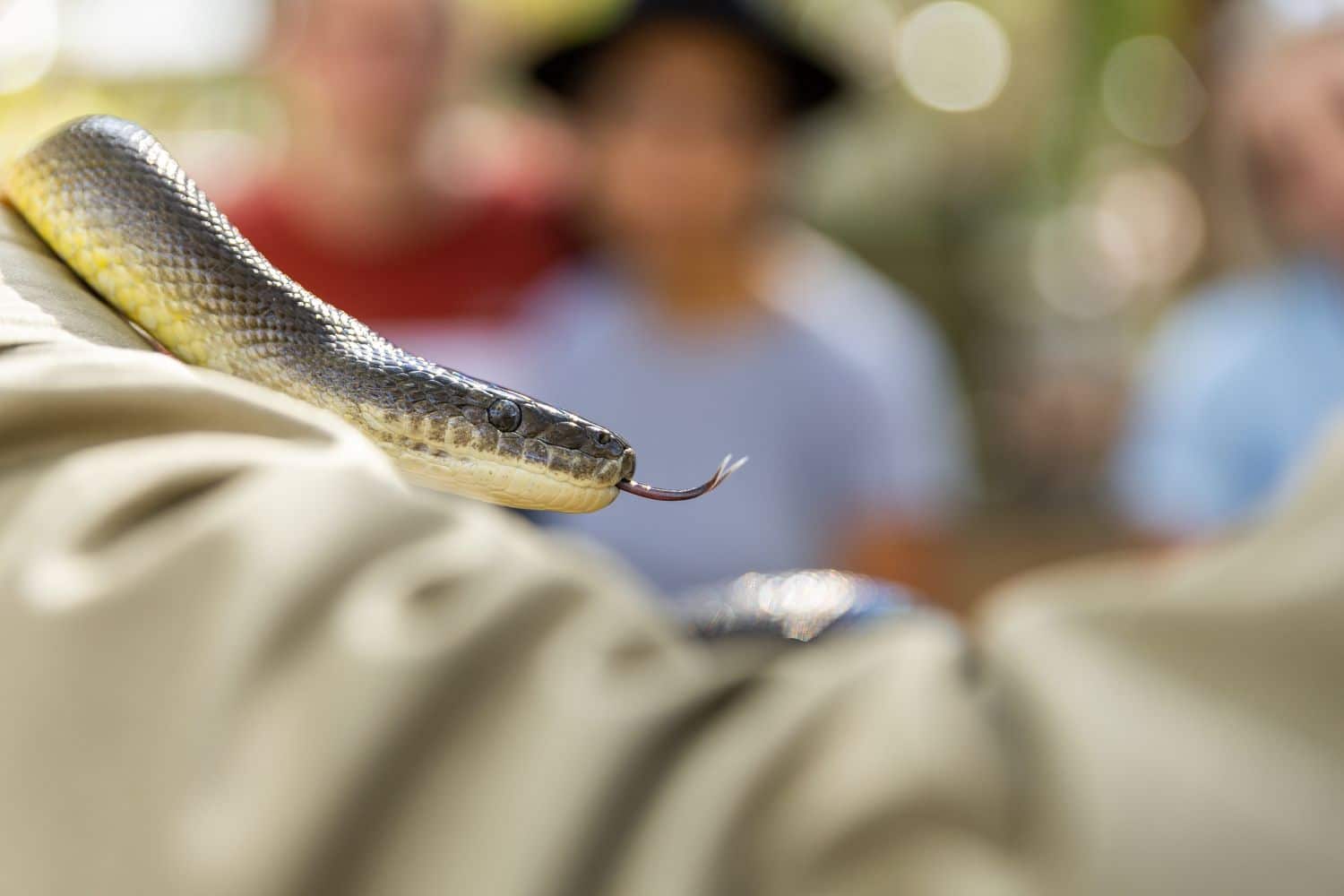Yet there has never been a single recorded human fatality from a bite of this snake!
The other nine of the ‘Top 10’ most poisonous snakes on earth also live here in Australia. Yet more Australians die every year from bee stings than they do from snake bite.
Why have these snakes evolved such powerful venom, and why are they so seldom encountered by most Australians?
Visitors to Billabong Sanctuary have a rare chance to see the Inland Taipan, as well as other potentially deadly reptiles, safely housed in large enclosures.
Learn more about these fascinating animals from our knowledgeable Rangers, and from the in-depth articles here on our website.
WHAT’S IN A NAME?
The genus name ‘Oxyuranus’ derives from the Greek words ‘oxis’ meaning sharp and ‘oura’ meaning ‘tail’. The species name ‘microlepidotus’ comes from the Greek ‘micros’ meaning ‘small’ and ‘lepis’ meaning ‘scale’. Put it all together and the scientific name translates as ‘small-scaled sharp-tail’.
The Inland Taipan is also known as the Fierce Snake, the Small-scaled Snake, or the Western Taipan.
Taipans belong to the Elapidae family of snakes. Members of this family are all venomous, with relatively short fixed fangs at the front of the jaw.
WHAT DOES IT LOOK LIKE?
The only truly accurate way to identify most snakes is by counting the rows of scales across the back at mid-body and noting the pattern of scales on the head and tail.
A few have body shapes that are quite distinctive, and some scale patterns are unique, but in general colour is very variable.
On the rare occasions when you might encounter a snake in the Australian bush, what you usually see is an anonymous flash of dark scales, as the tail disappears under the nearest pile of leaves or into a hollow log.
It helps to learn about both the general appearance and the behaviour of snakes in your area or the places you’re visiting, so that you have an understanding and appreciation of all of these fascinating reptiles.
The head of the Inland Taipan is not distinct from the neck, as it is on Coastal Taipans. The body is streamlined. The scales on the back vary among individuals from light brown to rich olive-brown or even black. There is seasonal variation in colour, many snakes becoming darker during the winter months. Many of the scales have darker edges forming indistinct bands especially towards the tail. The head may be black. The iris is very dark brown.
Scales on the belly are creamy to light yellow with a darker hind edge.
Average length for adults is about 2 metres (6.5 ft) with a maximum of about 2.7m (8.8 ft). Although the maximum size is smaller than that of the Coastal Taipan, this is a large, formidable snake.
If provoked to defend itself, the Inland Taipan flattens the body into low, s-shaped curves, with the head pointing straight at the perceived threat. More often than not, if approached, it will retreat into shelter.
WHERE DOES IT LIVE?
This is the good news. The inland taipan lives in the far west and southwest of Queensland, extending through the far west of New South Wales into the northeast corner of South Australia, and into the southeast of the Northern Territory.
This distribution includes the drainage systems of the Cooper and Diamantina Rivers, as well as the Bulloo, Paroo, Warrego and lower Darling.
Few people live in this remote, hot, dry country, and the inland taipan is rarely encountered.
To escape the blistering heat of this open country, the inland taipan shelters in abandoned animal burrows, deep fissures in cracked ground, rock crevices and sink holes.
WHAT DOES IT EAT?
Inland taipans eat only mammals. The prey taken most often is the native long-haired or plague rat (Rattus villosissimus).
The snake corners the rat in its burrow or in deep cracks in the soil, then bites it quickly several times without releasing it. The venom acts so quickly that the victim does not have time to fight back.
The inland taipan usually hunts during the early morning, but will remain active in the afternoon in cooler weather. During extremely hot weather it becomes nocturnal.
Populations of plague rats fluctuate widely from year to year. The inland taipan adapts to these variations by becoming quite fat during years of abundance and losing weight or changing to different prey animals in years when plague rats are scarce. Alternate prey includes small to medium-sized mammals such as the kultarr (a small carnivorous marsupial) and the introduced house mouse.
ADAPTATIONS FOR THIS DIET
Taipans detect their prey by sensing movement and odour. They seem to have better eyesight than many other snakes. They flick their forked tongue rapidly in and out of the mouth, ‘tasting’ the presence on the air of potential prey animals. This chemical information is passed to the Jacobson’s organ in the roof of the mouth, and then to the brain.
The lean muscular body allows the snake to travel fast in pursuit of its prey. The inland taipan corners the rat in its burrow or in a crack in the soil, then bites it quickly several times without releasing it. It may even grip the prey in a bend of its body (unlike the coastal taipan which strikes then releases its prey). The venom acts so quickly the victim does not have time to fight back.
Now the snake is faced with its meal—usually a large rat—that may be several times larger in diameter than its own body. Snakes can’t rip their food apart, so they need to swallow their victim whole. This is a formidable undertaking! Imagine you or me having to swallow an entire melon without chewing it into bite-sized pieces!
Snakes have amazing adaptations that allow them to swallow their prey.
First, they nudge the victim until it is correctly aligned so that they can swallow it headfirst. This way, they are not going against the grain of fur, feathers, or spikes on their prey.
The two halves of a snake’s lower jaw are not fused in the middle, but are held together by flexible muscles and ligaments. This allows them to stretch incredibly far apart as the animal is swallowing.
The upper and lower jaw do not ‘unhinge’ as is commonly believed. Instead, the food passes below this joint along the bottom of the neck, which can stretch enormously around the prey animal.
In order to move the food along, the snake grips it with the fangs on alternate sides of the jaw, moving one side of the jaw and then the other along the prey, passing it down its throat. During this process it produces huge amounts of saliva to lubricate the prey as it moves along.
The ribs of a snake are not anchored to a breastbone (as in other animals, including people) so the tips of the ribs can stretch apart as the food moves on down the snake’s body.
The skin of the snake is also very stretchy, with relatively small scales. This enables the body to expand hugely as the food item is swallowed.
It can take several hours to swallow a large animal. After eating large prey, the snake will usually spend much time basking in the sun to maintain a high enough body temperature to digest the meal. The venom, which stopped the victim in its tracks, now helps to digest it— powerful myolytic enzymes in the venom help break down the flesh of the dead animal.
The ability to swallow very large food items means that a big snake need not expend energy on frequent hunting activities. It may need to eat only a few meals every year.
SNAKES IN LOVE: BREEDING BEHAVIOUR
Because they live in such a remote, inhospitable part of the country, and are shy and retreating by nature, most information on breeding behaviour of inland taipans comes from observation of captive snakes.
Mating occurs in spring, anytime from August through December. Like coastal taipans, male inland taipans may engage in a spectacular competitive display called ritualistic combat. In this test of strength, they wrap around each other’s bodies like a coiled rope, wrestling with each other till the stronger snake forces his rival’s head to the ground. The struggle may last for hours, until the stronger male finally wins the right to mate with the female.
If the female is receptive, he rubs his chin up and down her body, then twists the lower part of his body under hers. Males have two sex organs, called hemipenes, but only one at a time is used for mating. Mating may last for several hours, and a female may mate with more than one male during the breeding season.
About two months after mating, the female lays up to 20 eggs, with an average clutch size of 16 eggs. Older females (which have a larger body size) generally lay more eggs than younger ones. Taipan eggs are elongated in shape, with a leathery, permeable shell. Females will not usually mate every year because of the high energy costs and risks associated with reproduction.
After depositing her eggs, the female abandons the nest site. Hatching occurs about two months later.
Young snakes grow very fast under favourable conditions. Males and females grow to about the same size. Male taipans reach sexual maturity at about 16 months, and females at about 28 months of age.
Captive snakes generally live for 10 to 15 years. An inland taipan at Australia Zoo lived to be over 20 years old!
JUST HOW DANGEROUS IS IT?
The venom of the inland taipan is by far the most potent venom of any land snake in the world. For example, it is about 50 times more toxic than the venom of the Indian cobra.
The venom is actually a powerful cocktail of enzymes and other agents that paralyse nerve endings, destroy muscle tissue and cause severe bleeding.
The accepted standard for comparing the toxicity of snake venoms was devised in the 1970s by the Commonwealth Serum Laboratory (CSL) in Melbourne. Tests were done by injecting live mice and measuring the amount of venom required to kill 50% of test animals, yielding a number called LD50 (or Lethal Dose 50): the smaller the number, the more toxic the venom. The LD50 of the Inland Taipan is 0.025mg/kg. Expressed in other units, a single bite could kill nearly 250,000 mice.
The actual number for any particular snake doesn’t really mean all that much (except to all those mice!): dead is dead. The relative danger of venomous snakes depends on many factors, such as the amount of venom injected, the length of the fangs, the sensitivity of the victim to the toxin, and the likelihood of getting bitten in the first place.
Inland taipans have shorter fangs (from 3.5 to 6.2mm long, or about ¼ of an inch) than coastal taipans, and inject only about 1/3 as much venom per bite. They are also shy and reclusive, and because they live in such remote locations, they seldom come in contact with people.
The few people who have been bitten have been snake handlers, such as people who catch snakes to extract their venom, or keepers in wildlife parks.
There are actually NO recorded human fatalities from the bite of an inland taipan!
By contrast, less venomous snakes such as cobras and vipers that live in the more densely populated continents of Asia and Africa kill tens of thousands of people every year.
FIRST AID FOR SNAKE BITE
Anyone out and about in the Australian bush should carry a couple of broad elastic pressure bandages and become familiar with first aid for any snake bite.
All Australian hospitals and medical clinics carry specific antivenes, as well as kits that enable the staff to identify the type of snake by taking a swab of the bite site. It is not necessary to kill or capture the snake in order to identify it. You are just putting yourself at added risk of being bitten.
STATUS IN THE WILD
The Inland taipan is common within its range and is not considered endangered.
Like every Australian snake, it is protected by law.
It is an amazing animal, wonderfully adapted to its special niche in the Australian outback and deserves our healthy respect.




